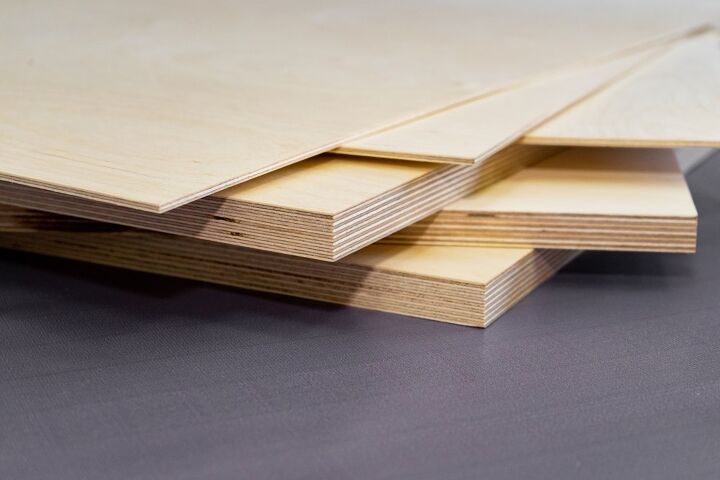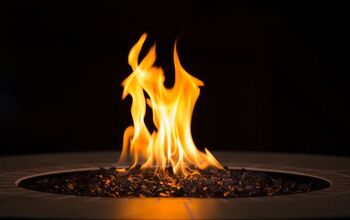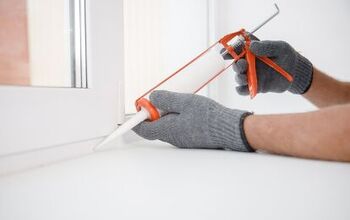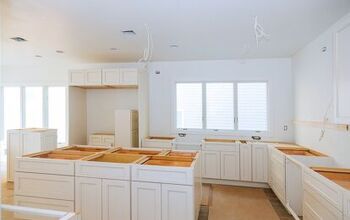What Is Fire-Rated Plywood? (Find Out Now!)

When you’re first getting used to the world of woodworking, materials become a major cornerstone of your new hobby. This means you’re going to be eyeball-deep in woods like pine, maple, and oak. One of the cheaper materials that you can use is plywood. There are tons of different types of plywood, too. One of the more popular is fire-rated plywood, but was exactly is this material?
Fire-rated plywood is specialty plywood that was made by pressure-infusing plywood with flame-retardant chemicals. This helps prevent plywood from burning when it comes into contact with fire. This makes it a safer type of wood to use in home structures and backboarding.
Having any sort of fire safety added to your home is a great thing, but it’s good to know what this stuff is before you order a batch. This article is dedicated to helping you learn about this nifty plywood category.
Do You Need to Hire a Framing Contractor?
Get free, zero-commitment quotes from pro contractors near you.

What Is Fire-Rated Plywood Supposed To Be?
In many projects involving the structural integrity of a home, plywood is the common go-to. It’s cheap, it’s sturdy, and it doesn’t have to be visible to the naked eye. Unfortunately, like most other types of wood-based building materials, plywood burns. To make it more heat-resistant and flame-retardant, builders use a special chemical treatment to make plywood fire-rated.
This is a material that is meant to help you avoid the spread of fire, should a fire break out in your home. Fire safety experts agree it’s a great way to help make your home more fireproof. With that said, the purpose of this plywood is to help prevent the spread of fire. It’s not going to be totally inflammable.
To be considered fire-rated, the following things have to be true about the plywood in question:
- The plywood needs to be made with fire-resistant chemicals. Sorry! There’s no such thing as natural fire-rated plywood.
- The plywood has to have a Fire Spread Index rating under 25. This means that it officially is a slow-spreading type of wood.
- When the test extends beyond 20 minutes, the fire can’t show signs of combustion. In other words, the plywood has to keep its cool, even after most fire tests would call it quits.
- The fire also cannot spread more than 10.5 feet beyond the center of the flame at any point of the test. If you can’t tell, this means that the material is meant to be exceptionally slow-burning compared to most other woods.
An Important Note About Fire-Rated Plywood’s Grading
It’s important to realize that all fire-rated plywood is not created equal. There are different kinds of fire-rated plywood, complete with different ratings. Each type of fire-rated plywood will have a smoke rating, an ESR notice, and a state of conformance to development standards associated with it.
These guides will help you determine whether or not you want to use a particular type of fire-rated plywood. You can usually find them on the tag where the details of the plywood are mentioned in the store. Fire-rated plywood can come in many varieties, and that includes birch plywood.
When Do You Need To Use Fire-Rated Plywood?
Fire-rated plywood is often used in public settings, particularly in areas that serve sensitive parts of the public. This includes things like ceilings, floors, and wall partitions for large-scale projects. In areas like schools, hospitals, gymnasiums, and major retail stores, fire=rated plywood is used to help ensure that the structure is as safe as possible for people around the area.
Most cities will have certain statutes that give guidelines as to when fire-rated plywood should be used. To find out what the minimum standards are for buildings in your area, make a point of looking at your local building codes. Every city will have its own unique building codes for fire safety.
With that said, you don’t have to stick to minimum standards to use fire-rated plywood. People who want to ensure that they have a highly fire-safe home can also use it for the exact same purpose. When in doubt, ask a contractor whether or not it makes sense to use fire-rated plywood.
How Many Hours Is Fire-Rated Plywood?
Fire-rated plywood comes in a wide range of different hour ratings. The most common differences include one and two-hour rated plywood. In other words, you should expect walls made from fire-rated plywood to take one to two hours to burn.
Where Can You Buy Fire-Rated Plywood?
Fire-rated plywood is easy to find, really. Most major hardware stores will carry it, including top names like Ace Hardware, Lowe’s, as well as Home Depot. You can even get free wood cutting services at most hardware stores too.
There are 20 types of plywood, and not all of them are fire-rated. If you are unsure of whether a store has fire-rated plywood, the best thing you can do is call ahead to get the scoop.
How Much Does Fire-Rated Plywood Cost?
Fire-rated plywood, like most other types of wood, can vary greatly in cost. Fire-rated plywood can cost anywhere from $60 to $125 per sheet at the time of this writing. Prices are expected to decline once the overall cost of wood drops. However, it is expected to remain roughly the same throughout the entire supply chain crisis.
How Long Can Fire-Rated Plywood Protect A Home?
Fire-rated plywood is expected to protect a home for at least one to two hours in the event of a fire. However, the story doesn’t just end there. You may be wondering how long fire-rated plywood is good for too. The good news is that you can expect fire-rated plywood to remain protective for far longer than other types of wood.
The unique pressure treatment that fire-rated plywood is made with means that you should expect your plywood to stay fire-protective as long as it exists without fire. In other words, it would actually take active exposure to fire to make your plywood actually burns.
How Can You Tell If Plywood Is Fire-Rated?
You can tell if you’re using fire-rated plywood by looking at it. Most of the time, you will be able to see a stamp that says “Fire-Rated.” In some cases, it will also give you a number that relates to the specific fire rating that the plywood in question has. When in doubt, ask a store associate whether or not the plywood you want to buy makes the grade.
Do You Need to Hire a Framing Contractor?
Get free, zero-commitment quotes from pro contractors near you.

Related Questions
How do you make plywood fire resistant?
Fire resistance can be added to plywood in several ways. The first way to do it is to use a pressure treating system to infuse fire-proofing chemicals into the wood. The other way to do it is to use a sealant or paint that’s been rated for fireproofing. With the second method, you may not get as much fireproofing.When choosing a way to fire-proof your plywood, make sure to take a look at the building codes in your area. Those will give you a good idea of what to expect.
What burns faster, plastic or wood?
While wood tends to burn faster, plastic tends to burn hotter. Wood is also prone to igniting earlier than plastic, which is why most people tend to prefer plastic when it comes to areas that are prone to heat. With that said, plastic also tends to emit more noxious fumes when it is lit on fire. So, if fire is a concern, it’s crucial to choose a material that works with the risk and is capable of mitigating problems that could arise.
Is treated lumber fire-resistant?
While treated lumber does have its perks in terms of durability, the truth is that it is not meant to be fire-resistant. Treated lumber is not fire-rated, nor should you try to treat it as if it is. If your project requires lumber that has been fire-rated, you need to buy lumber that specifically has a fire rating stamped on it. Otherwise, you run the risk of having your home burn to the ground.
Related Guides

Ossiana Tepfenhart is an expert writer, focusing on interior design and general home tips. Writing is her life, and it's what she does best. Her interests include art and real estate investments.
More by Ossiana Tepfenhart



























